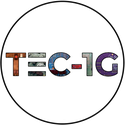Awesome Little Kit!
For TEC-1G Z80 Single Board Computer Kit
I remember seeing Talking Electronics magazines at the public library when I was younger, but it was out of my price range to order from Australia and have it shipped to Wisconsin USA. Fast forward 40 years and I finally have the time & money to tinker around. I did play around with Radio Shack TRS-80 computers growing up, but never dug into the Z-80 Assembly programming.
Shipping was pretty quick from AUS to Detroit, MI and I had no issues with customs or delivery. Everything was well packed and made the voyage without damage. I printed out all of the information on the Tindie & Github site while the package was in transit.
Upon Receipt of Unit # 129 (TEC-1G Z80 Computer - Full Kit of Parts w/ fullsik keys), I did a quick inventory and only needed to pull a few resistors, capacitors and sockets out of my stock. One of the resistor networks was cracked / split down the middle, so I did have to refresh my stock with a quick Amazon order.
Read the errata specific to the pcb that you have before starting and follow the instructions. I had to reverse the polarity on the probe header and install the bodge wire, nothing was complex or difficult. The PCB I had was green and all of the traces came pre cut with a Dremel Tool bit.
I did struggle with the little LEDs which backlight the keys – might have been my Hakko FX888D soldering station was a little too hot, so the legs on a few of the white LEDs melted off. Luckily I ordered the Graphical LCD Kit, Micro SD & GIO Kit, Matrix QWERTY & Real Time Clock Kits and Mark hooked me up with 3 spare white LED’s when that order shipped. My junk box did not have any white LED’s that had the same size and I could not find a similar LED on Amazon.
It was easier to insert the LED first and then the key switch, flip the board over to tack solder one leg in, then gently pull it flush to the board. Once I was happy that everything fit correctly, I went ahead and soldered both legs and the switch contacts.
The rest of the assembly & soldering went smoothly. I had extra sockets in my junk box, so I went ahead and socketed the 7 Segment LED’s, the 8 Segment Bar LED and a few other chips. I had a 10 Bar LED, but I think LED L2 & L5 + the 8 Bar LED equals the 10 Bar LED.
Take your time, confirm component values with a DMM or one of those component tester kits and you’ll be fine. I did have to desolder the 9 Key LED & switch, as that LED died. Luckily my Hakko FR301 desoldering tool (money well spent) saved me and I had the repair done in 2 minutes.
I used my adjustable DC power supply set at 5 volts for testing and final power. Jumper settings had to be tweaked, but I was greeted with “TEC-1G Main Menu”. Now for the bad news…
Digging thru my old junk box, I found an adjustable wall wart that had 6, 9 & 12 V Settings and a barrel jack that fit. I confirmed 9 volts and tip + with my multi meter (twice) and then attempted to power the board via the barrel jack and voltage regulator. Needless to say, the wall wart was junk and the voltage jumped to 12V and I yanked the plug.
My plan was to start playing with the TEC-1G, but now I get to trouble shoot whatever I ended up frying. I didn’t let any smoke out, so I’m hoping if I damaged any chips I’ll be able to pull them out of my RC 2014 modules. I’ll post this review on the Facebook Group and see what kind of feedback or suggestions I get.
Other than my self-inflicted damage, the kit was a fun build and I’m looking forward to getting it fired up again! Good Job Mark!

